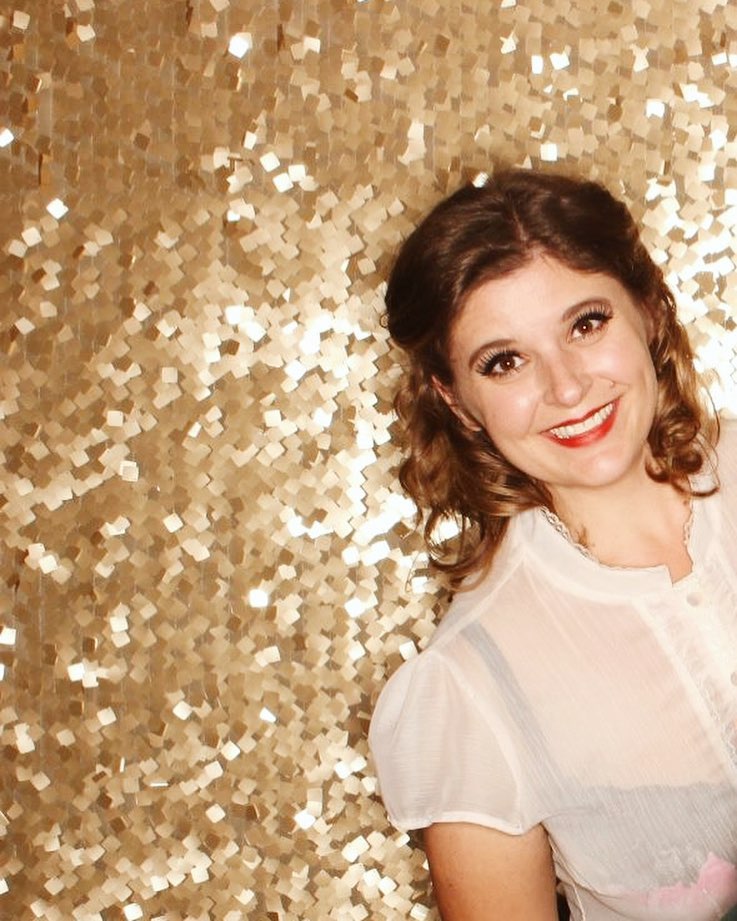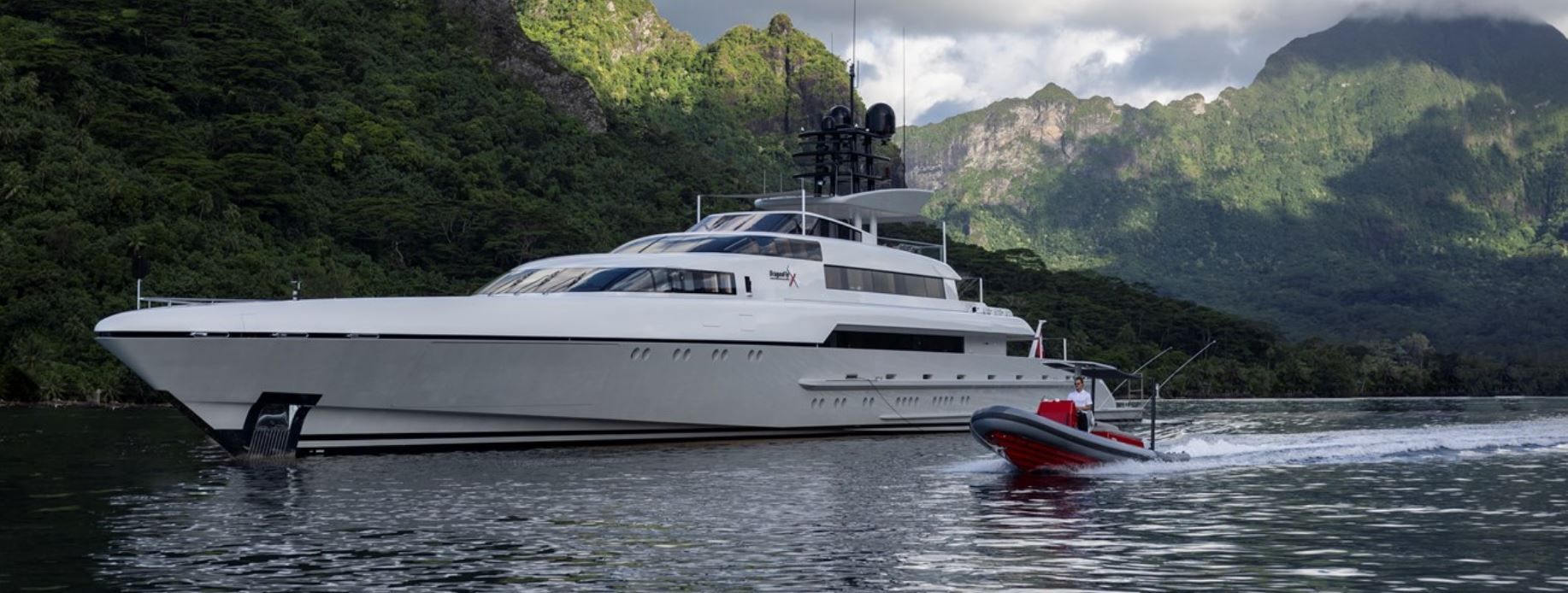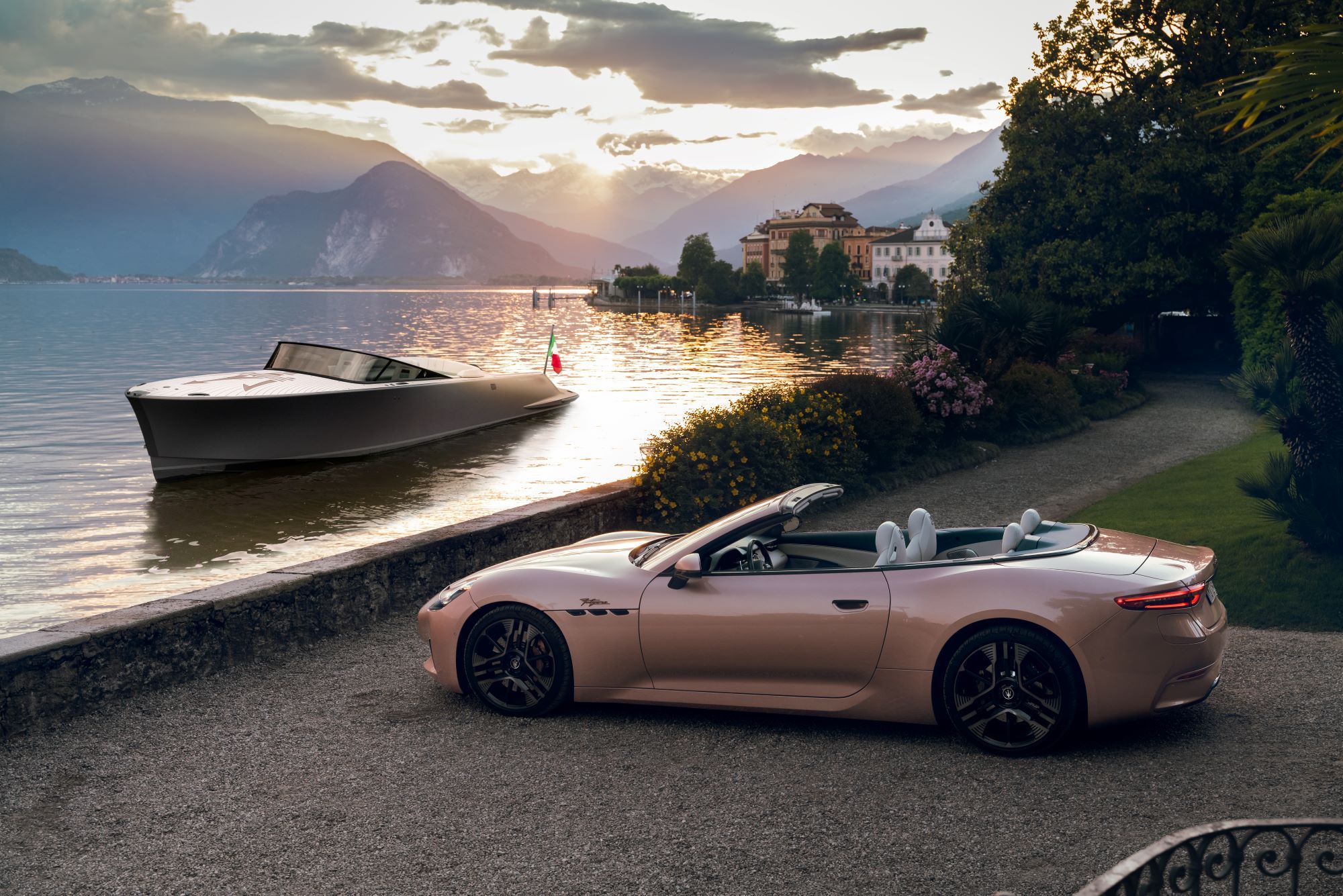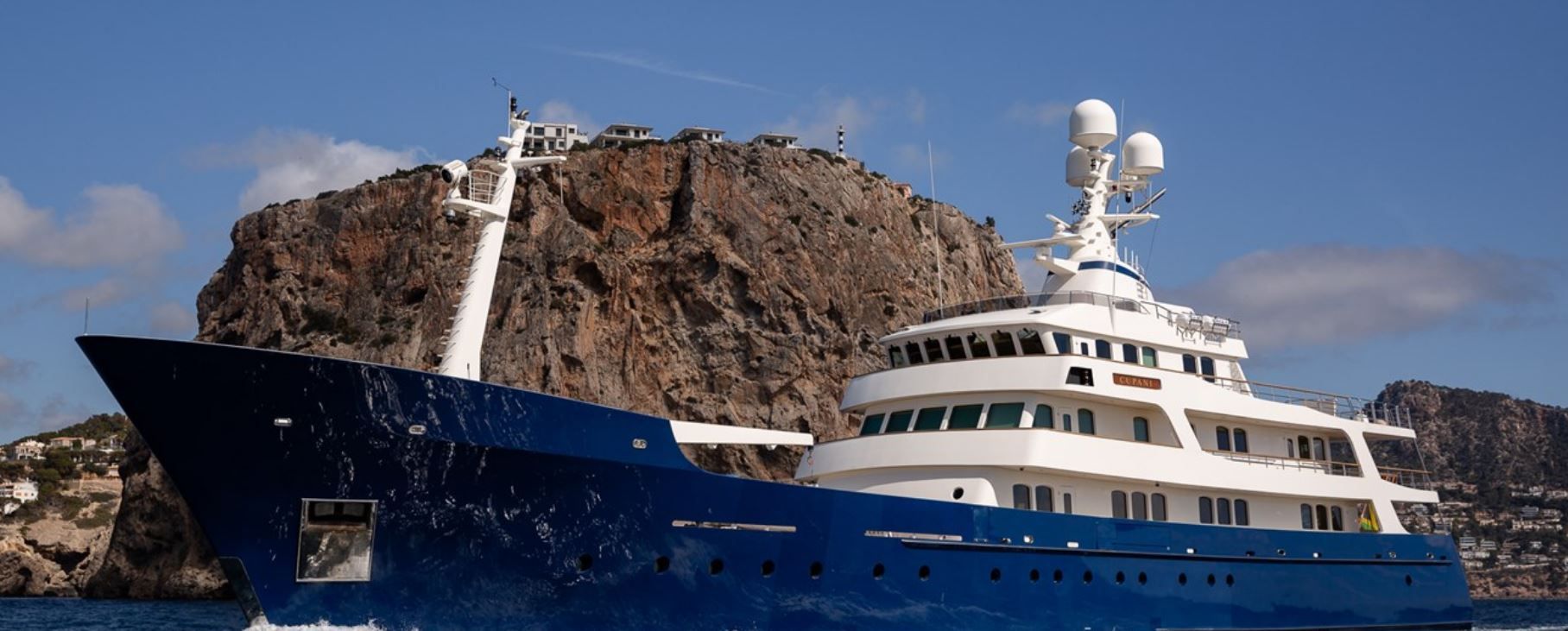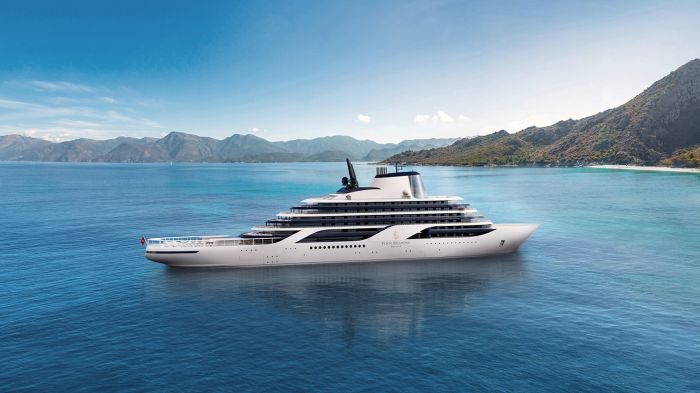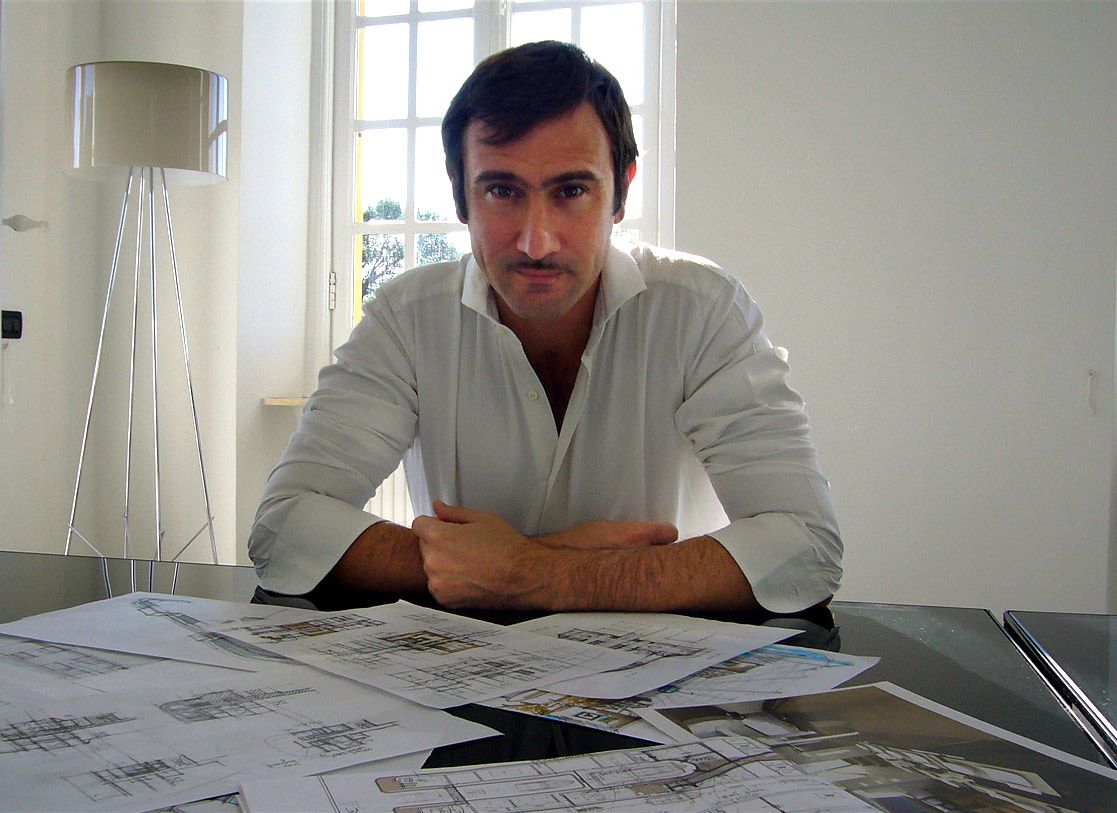
With Genoese Stefano Pastrovich at the helm, Pastrovich Studio continually creates sailing and motor yacht designs that are not only beautiful, but challenging to the status quo. From the beginning of his career collaborating with the Martin Francis Design Studio to being appointed Chief Designer at Wally Yachts, and eventually starting his own company in 2005, Pastrovich has developed a unique synergy with the sea that doesn't rely on contemporary styles or trends. In fact, if anything, it's Pastrovich (who looks like he could be the uncle of Jason Schwartzman—Wes Anderson, make this casting happen) who is creating the trends that the rest of the industry is bound to follow.
Despite being pretty early in the morning, he was kind enough to chat at length over the phone from his Monaco-based office, with the topics ranging from how he stays ahead of the yacht design game and his secret projects to why he doesn't design jets and what the new era of yachts will look like. Even after we exhausted the topic of boats, the conversation bounced to our shared Montenegrin lineage (the Pastrovich name pops up on some pretty old Yugoslavian maps) and travel plans.Whether you're super active and can't imagine a day at sea without jet skiing or you prefer to gaze out at the stars from a lounge deck, this guy knows how to deliver what you need in strange and exciting ways.

Mila Pantovich: Can you tell me a little about your background? How did you come to operate your own design office?
Stefano Pastrovich: I've been sailing since I was a child with my parents, so it was natural to design boats. I'd been always thinking, almost like [with] my soul, that I like to do big things. I started with Martin Francis, […] for three years; we did many things together. And then […] I said to myself, "I don't want to work for anybody anymore. I think I can open my office, but in case I don't manage to start by myself straight away, […] maybe I'd like to work with Wally Yachts." So, I went there and it was one of the top [..], I would say the best in terms of the connection between aesthetics, innovation, and challenge. I'm a very challenging person. I don't like to do what people do; I like to challenge myself. And then at some point, I said, "I'm ready. I'm going to do it myself." I opened my company in 2005 and that's it.

MP: Pastrovich Studio yachts are immediately recognizable and it's no secret that we love them at JustLuxe; how do you continually create new concepts that top the previous, while staying within your signature style?
SP: I love challenge. [In the past], people spent their time and money to test, to try to do things that did not exist. You didn't have a society behind [you] to support you with technology; you were growing the technology yourself without knowing if it was going to be good or bad. In those years, the people were challenging more than now. Now it's more controlled. You know where you go. People don’t risk too much. I like the previous time, so all my projects [are] very challenging. They are not crazy things. Sometimes people say they are crazy. No, no, they are not [...] crazy, I'm a guy who likes to march forwards.
The 118-foot WallyPower, she is now considered one of the best yachts in the world. She's an [iconic] boat; she's a piece of art. There is no doubt, and it's not because of me, it's just coincidence. Sometimes things come out [of a project]; I don't want to take all of the credit. The point is, when we designed this boat, people said, "What is this? You're stupid. What have you done? Why did you do this?" People kept saying that for many years and after 14 years, people said, "Ah, you know what? This is an untouchable piece. An unforgettable piece. It is maestro." That describes exactly who I am. I am a person who is not capable of staying in the moment where we stay now. I have to stay forwards. I have to think in a way [so] I don’t give you what you expect. I give you unexpectation.

MP: Your company states that there shouldn't be any interruptions within interior spaces, like doors, so there can be a relationship between rooms. How do you achieve creating different auras and moods while maintaining a cohesive style?
SP: Because that's you. That's your DNA. You can dress with different clothes, […] but at the end of the story, if you are naked, it is you. So your body is your body. You cannot change [it], but you can shape it into a different style. You can be aggressive, or become very soft. You can give the impression [of different] emotions. The same is for boats. You can find the same rules in all my designs all the time, and then they evolve, they change, they update in a different state, in a different way. [Our aesthetic keeps changing], with the same flow. I get bored [if making] a replica of what I [already] did. Why should I do the same?

MP: What are the main challenges of re-designing a vessel as opposed to designing one from on a blank piece of paper?
SP: I've done many refits that are challenging in the way that you try to clean the project. Most of the time you just need to remove what has been added, which was not part of the soul of the vessel. So many people, they just increase and they hide little by little the real aesthetic, the soul of the boat. So the big challenge is to bring forth the yacht's DNA. My job is very fun, but then when you go into the construction, it's quite difficult. Every time you open something [and] you dismantle part of the boat, you discover some more problems.
On the other hand, it's faster. When you do a refit, you see your baby much quicker than with a brand new boat. Usually a refit is one to two years maximum, depending on the size of the boat—sometimes it's five months. You suddenly see the big transformation; she was sh*t, and now she's a beautiful lady [laughs]. When you do a brand new boat, you have a long wait. For example, we are building two 70 meters and it takes four years. It's a very long process. But you can be fuller, free to do whatever you want unless you have a client who gives you very strong direction which you don’t like—which isn't my case. I never have clients giving me directions; they come to me because they like my stuff, that's it.

MP: You've just secured a new client; how does the process usually work?
SP: They talk about general things that they want in the aesthetic, so you propose the profile, and it’s [...] up to the client. Sometimes it's very helpful when they give their view, because my style is the result of talking to my guys, having discussion—I'm not a painter who paints by myself. It's part of team work. So sometimes when the clients talk, they help me, because they give me ideas and we can discuss. Maybe it's not my idea [that's] the correct one, it's not their idea, but it's the in-between. So they give me inspiration, a point of view. [...] They say, "If I give Stefano a good message of the lifestyle I have, Stefano can design something to fit this lifestyle. I don't give you specific details, I give you my generic way of life, what do I do? I do this and I do that. Finish. You are the architect. Find a way. Design that. I like to see the stars. Find a way and make a project where I can see the stars."

MP: Do most of your concept designs move on to production?
SP: No, because usually owners like to build something brand new. On my website you cannot see the 70 meters I'm building [for the past two years] and it will be invisible for the next two years. And there are three other boats you cannot see in public because they are invisible. When you do a concept it's very rare that a customer comes to you and says, "Build that." There are customers calling and saying, "I like that, but can we do this change, can we do this and that?" So, by the time that you do all these changes, you really change the design. [...] Most of the people know me now for the challenging projects. But then when you [ask], "Will you buy this?" They say, "No, you have to be very brave for that, so no, I would prefer something more classic." That's typical for the psychology of people. They dream, they say, "Wow, that's amazing. But if I had the money, no I wouldn't buy that. I would buy something more secure." So my brand is trying to […] show my philosophy, which is challenging, but at the same time we do more natural, classic, and more acceptable designs. Otherwise I would be asking for coins under the bridge [laughs].

MP: Where do you see the future of yacht design going? Are there any trends that you think are fading or any that you see as growing stronger?
SP: I the future you [will] lose one deck. [...] Because I think that in the future, all of this wedding cake philosophy of having many decks that are identical to each other […] will disappear and this will be the transition to go a step forward […], where we have the single volume object. So there are no decks visible from the outside. There will be a single volume, like a monolithic volume. There is a boat on my site which is called Sveti, which is an 150-meter concept design that is a typical example of how it will be. There is another boat which is called Alien, that is another example.

MP: What's one of you favorite parts of the job?
SP: Anything you build, there are normal buildings […] but then, there is a magic moment. Where the builder, the designer, and the owner are aligned in the same spirit. In the same philosophy, in the same chemical liaison. So magically you come out with an amazing project. Because the project, all projects, are not just because of me, the designer. The project is more than that. There are so many people involved that if you don't have this chemistry, […] this electrical feeling, you can be the best in the world but [without that] part you won't get the soul, the DNA that you wanted. It's very rare, it happens in your life a few times, with a few clients. I had the chance to do one with Wally, […] and this year I'm doing the new big thing. From 2000 to now, […] we've been building a boat for one of my big clients. And this will be another maestro. I've designed many boats, but she will be something.















